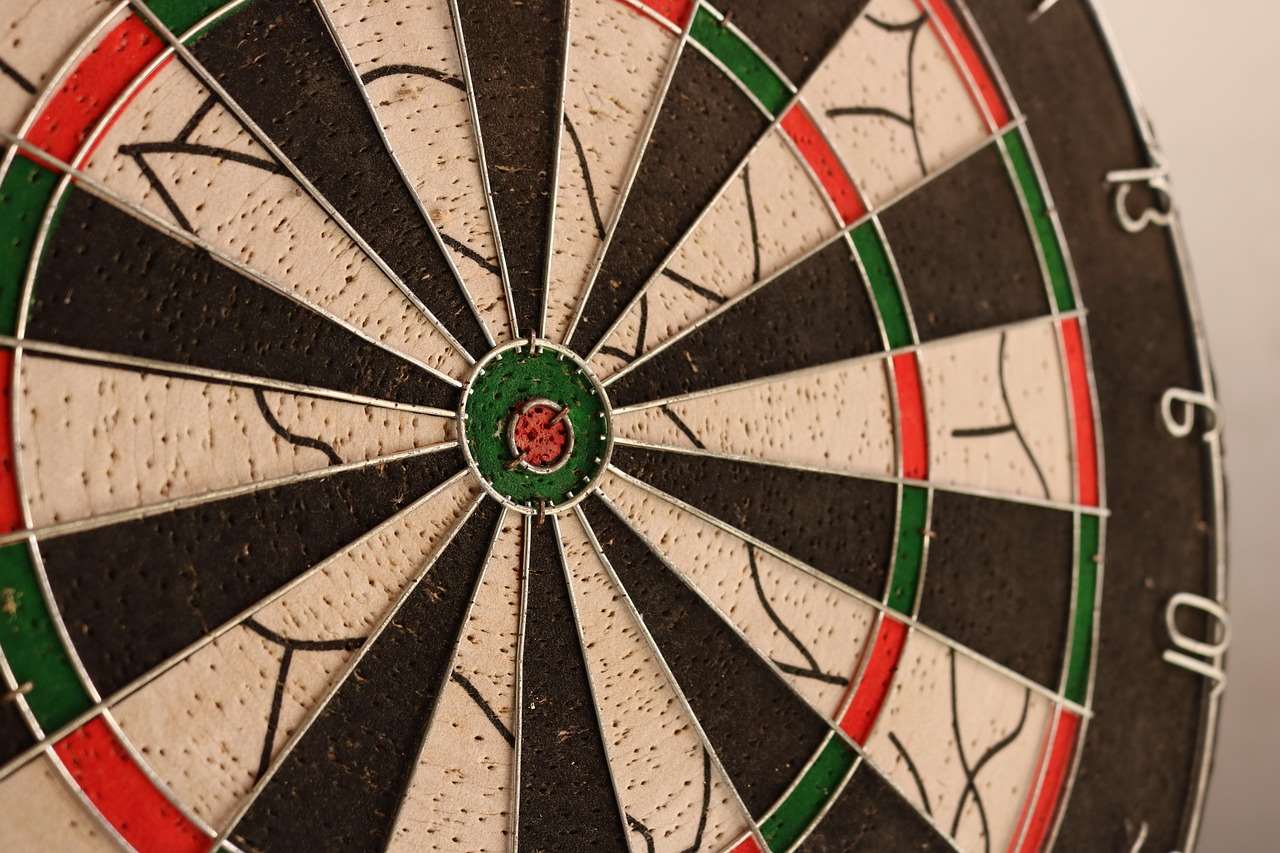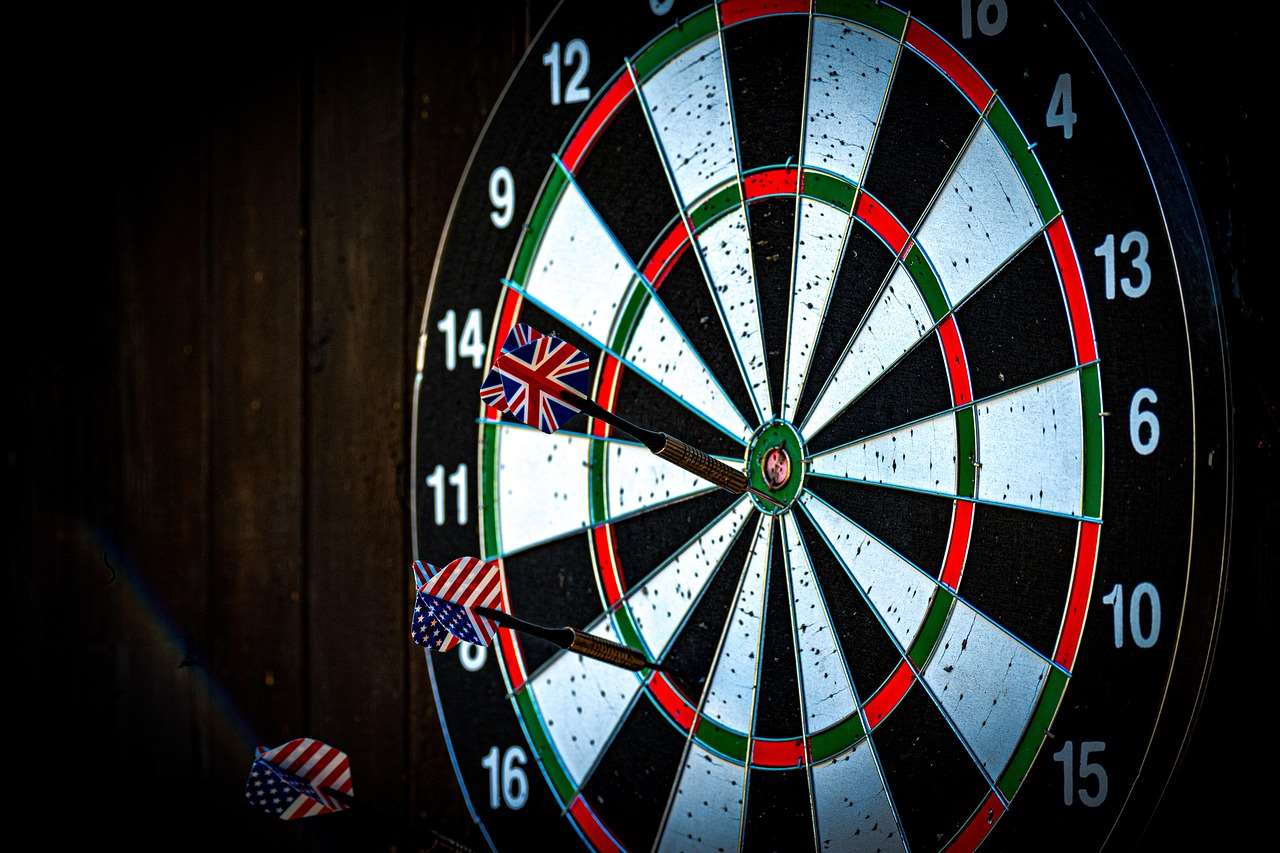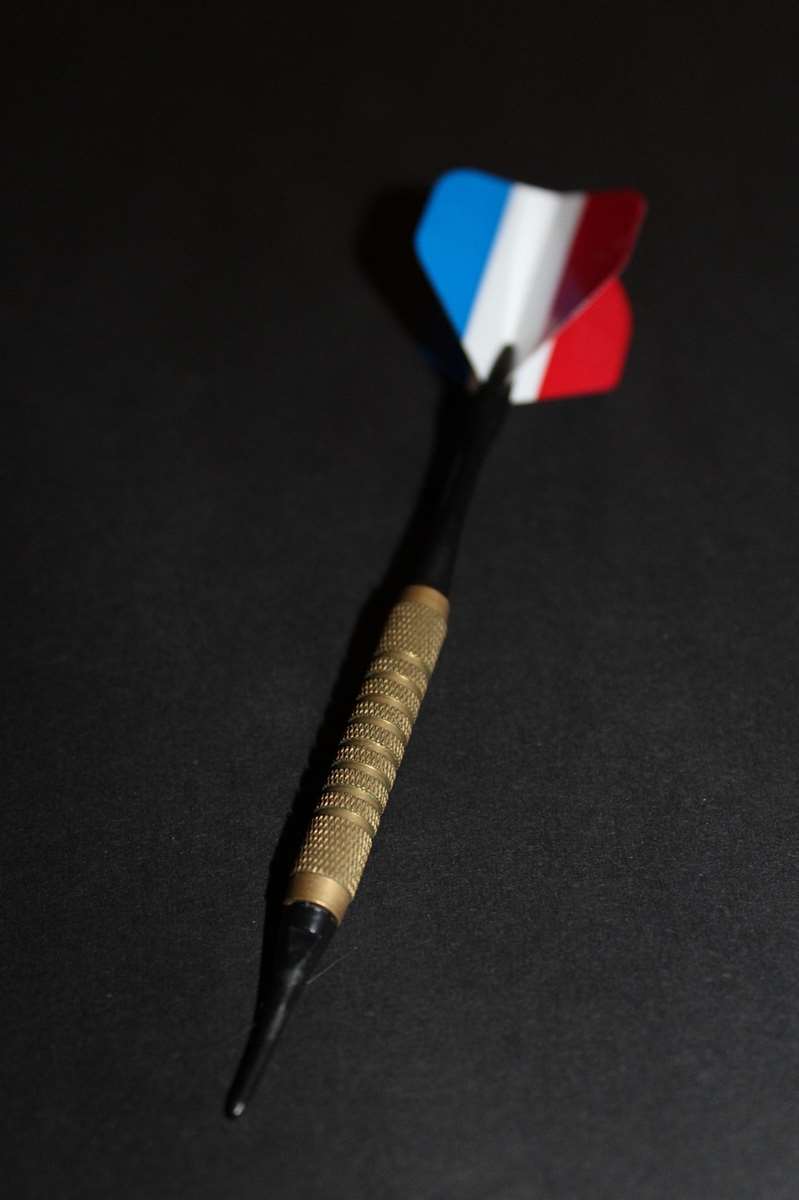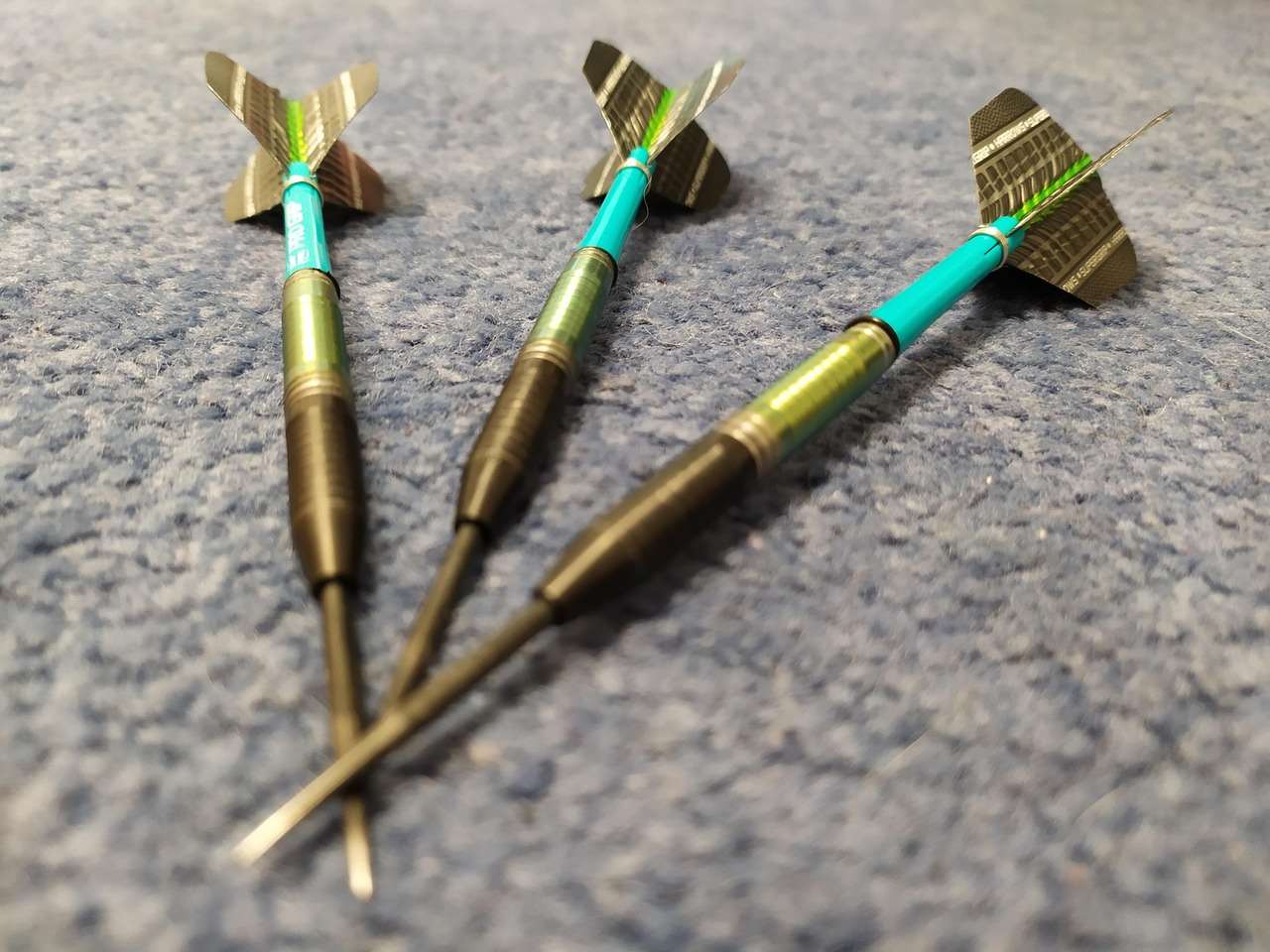Understanding how dart weight affects 501 performance is crucial for improving your game; generally, lighter darts are favored for finesse and faster throws, while heavier darts offer more stability and penetration. This article will explore the impact of dart weight on accuracy, throwing style, and overall 501 strategy, providing guidance to help you choose the right weight for your individual needs.
⚠️ Still Using Pen & Paper (or a Chalkboard)?! ⚠️
Step into the future! The Dart Counter App handles all the scoring, suggests checkouts, and tracks your stats automatically. It's easier than you think!
Try the Smart Dart Counter App FREE!Ready for an upgrade? Click above!
How Dart Weight Affects 501 Performance: A Deep Dive
The weight of your dart is one of the most fundamental aspects of your equipment, influencing everything from your throwing motion to your ability to consistently hit your target in a 501 match. Choosing the right dart weight is a personal journey, and what works for one player might not work for another. However, understanding the underlying principles will empower you to make an informed decision and ultimately enhance your performance on the oche. Dart weight is measured in grams (g), and darts typically range from 16g to 30g. The most common weights fall between 22g and 26g.

Ultimately, selecting the correct dart weight is a crucial aspect for optimizing gameplay. If you’re just starting out, consider reading up on Basic Darts Fundamentals for Beginners to develop a strong foundation.
Lighter Darts (16g – 22g): Speed and Finesse
Lighter darts are often favored by players who prioritize speed and a smoother, more fluid throwing motion. These darts require less force to propel towards the board, allowing for quicker release and potentially faster follow-through. This can be advantageous in 501, where maintaining a consistent rhythm is essential for accumulating points and closing out legs efficiently.
- Pros:
- Increased speed and throwing tempo.
- Reduced strain on the arm and shoulder.
- Potentially better for players with less physical strength.
- Greater ability to make last-second adjustments in flight path.
- Cons:
- More susceptible to external factors like air currents.
- Can feel less stable, especially for players with shaky hands.
- May require more precision to compensate for reduced momentum.
Heavier Darts (26g – 30g): Stability and Penetration
Heavier darts provide a more stable and solid feel, which can be beneficial for players who prefer a controlled and deliberate throwing style. The increased weight generates more momentum, helping the dart penetrate the board more effectively and reducing the likelihood of bounce-outs. This extra momentum also provides greater stability in flight, minimizing the impact of minor inconsistencies in your throw. Considering a change in dart weight should be part of your overall strategy, and you might also be interested in Simplified 501 game rules for novice players to ensure you’re playing with optimized strategy.
- Pros:
- Enhanced stability and reduced wobble in flight.
- Greater penetration into the dartboard, minimizing bounce-outs.
- More forgiving of slight errors in throwing technique.
- Can be advantageous for players with a stronger build.
- Cons:
- Requires more physical effort to throw consistently.
- May lead to fatigue during longer matches.
- Can be less forgiving of major flaws in throwing technique.

The Middle Ground: 23g – 25g Darts
The 23g to 25g range represents a sweet spot for many players, offering a balance between the speed and finesse of lighter darts and the stability and penetration of heavier darts. This weight range is often recommended for beginners as it allows them to develop a solid foundation in their throwing technique without being overly reliant on either speed or power. Experimenting within this range can help you identify your preferred balance.
How Your Throwing Style Influences Dart Weight Choice
Your individual throwing style plays a significant role in determining the optimal dart weight for 501 performance. Consider these factors:
- Arm Action: Players with a shorter, snappier arm action may benefit from lighter darts, while those with a longer, smoother swing might prefer heavier darts.
- Release Point: If you have a consistent release point, you may be able to control heavier darts more effectively. A less consistent release might be better suited to lighter darts.
- Grip: A firm grip can help stabilize heavier darts, while a looser grip might work better with lighter darts.
- Follow-Through: A full, controlled follow-through often complements heavier darts, while a shorter follow-through may be more suited to lighter darts.
Experimentation is Key: Finding Your Ideal Dart Weight
The best way to determine the optimal dart weight for your 501 performance is to experiment with different weights and see what feels most comfortable and produces the best results. Borrow darts from friends, visit a dart shop and try out different models, or purchase a variety pack of darts with varying weights. Pay attention to the following when testing different weights:
- Consistency: How consistently are you able to hit your target with each weight?
- Comfort: How comfortable does each weight feel in your hand and during your throw?
- Accuracy: How accurate are your throws with each weight?
- Fatigue: How much fatigue do you experience after throwing each weight for an extended period?

Beyond Weight: Other Dart Characteristics to Consider
While dart weight is a crucial factor, it’s important to remember that other dart characteristics also influence performance. These include:
- Barrel Shape: Different barrel shapes (straight, torpedo, bomb) affect the dart’s balance and grip.
- Grip Type: The texture and depth of the grip determine how securely you can hold the dart.
- Material: Darts are typically made from brass, nickel silver, or tungsten. Tungsten darts are denser, allowing for a slimmer barrel with the same weight.
- Flights and Shafts: The size and shape of the flights, as well as the length and material of the shafts, affect the dart’s aerodynamics and stability in flight.
Furthermore, adapting the rules to suit your specific playing environment can greatly enhance the enjoyment of your game. For instance, you might want to explore Adapting darts rules for small spaces: tips and tricks or even look at Alternative darts rules for home play.
Dart Weight and 501 Strategy
The dart weight you choose can also impact your overall 501 strategy. For example, if you consistently struggle to hit the treble 20, you might benefit from a heavier dart that provides more stability and reduces the likelihood of straying off target. Conversely, if you excel at scoring but struggle with finishing, a lighter dart might allow for quicker adjustments and more precise placement when aiming for the double. Understanding how dart weight affects 501 performance is more than just physical feel; it influences your entire approach to the game. Sometimes players also look into How to make darts fairer with handicap rules when trying to improve their overall gaming experience.

Adjusting Your Technique Based on Dart Weight
Once you’ve chosen a dart weight, it’s essential to adjust your throwing technique accordingly. This may involve modifying your grip, stance, arm action, or follow-through. Be patient and allow yourself time to adapt to the new weight. Practice regularly and focus on developing a consistent and repeatable throwing motion. Video recording your throw can be invaluable for identifying areas for improvement.
The Importance of Consistent Practice
No matter which dart weight you choose, consistent practice is the key to improving your 501 performance. Dedicate time to practicing regularly, focusing on both accuracy and consistency. Use practice routines and drills to hone your skills and identify areas for improvement. The more you practice, the more comfortable you’ll become with your darts and the better you’ll perform in 501 matches. Remember that **dart weight** is just one piece of the puzzle; consistent practice is what truly unlocks your potential.

Conclusion
Ultimately, understanding how dart weight affects 501 performance is a critical element to improving your game. Experiment with different weights, consider your individual throwing style, and practice consistently to find the optimal weight for your needs. Remember that the right dart weight is a personal preference, and what works for one player may not work for another. Take the time to experiment, adjust your technique, and find the weight that helps you consistently hit your target and maximize your scoring potential. So, grab some different weighted darts and head to the oche – your journey to better 501 starts now! Ready to elevate your dart game? Visit our online store today to explore a wide selection of darts and accessories tailored to your individual needs and playing style!
Hi, I’m Dieter, and I created Dartcounter (Dartcounterapp.com). My motivation wasn’t being a darts expert – quite the opposite! When I first started playing, I loved the game but found keeping accurate scores and tracking stats difficult and distracting.
I figured I couldn’t be the only one struggling with this. So, I decided to build a solution: an easy-to-use application that everyone, no matter their experience level, could use to manage scoring effortlessly.
My goal for Dartcounter was simple: let the app handle the numbers – the scoring, the averages, the stats, even checkout suggestions – so players could focus purely on their throw and enjoying the game. It began as a way to solve my own beginner’s problem, and I’m thrilled it has grown into a helpful tool for the wider darts community.